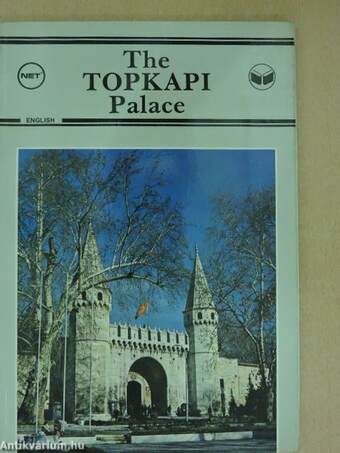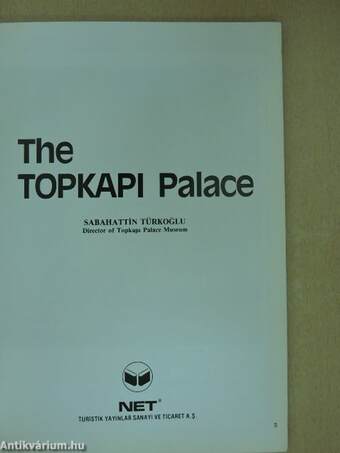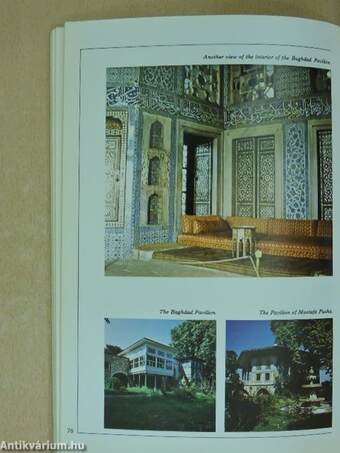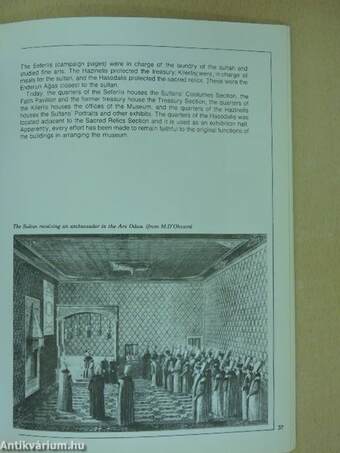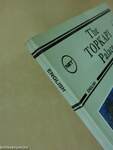1.067.053
kiadvánnyal nyújtjuk Magyarország legnagyobb antikvár könyv-kínálatát

VISSZA
A TETEJÉRE
JAVASLATOKÉszre-
vételek
The Topkapi Palace
A Topkapi palota
| Kiadó: | NET Turistik Yayinlar A.S. |
|---|---|
| Kiadás helye: | Isztambul |
| Kiadás éve: | |
| Kötés típusa: | Fűzött papírkötés |
| Oldalszám: | 94 oldal |
| Sorozatcím: | NET Books |
| Kötetszám: | |
| Nyelv: | Angol |
| Méret: | 24 cm x 17 cm |
| ISBN: | 975-479-001-9 |
| Megjegyzés: | Színes és fekete-fehér fotókkal és reprodukciókkal. |
naponta értesítjük a beérkező friss
kiadványokról
naponta értesítjük a beérkező friss
kiadványokról
Előszó
Establishment, Location, Environs
The area occupied by the Topkapi Palace extends from Sarayburnu to the Church of St. Sophia. It is surrounded by a high wall called Sur-i-Sultani (Imperial... Tovább
Előszó
Establishment, Location, Environs
The area occupied by the Topkapi Palace extends from Sarayburnu to the Church of St. Sophia. It is surrounded by a high wall called Sur-i-Sultani (Imperial Wall) which is fortified with towers and has seven gates. Four of these gates are on the side facing the sea. The most important gate is Bab-i-Humayun (Imperial Gate), located behind St. Sophia. It took approximately thirteen years (1465-1478) to complete the construction of the palace, including the wall.
New additions constructed during the reign of each succeeding sultan changed and enlarged the original plan of the palace. The inscriptions pertaining to the construction and the tughras (Imperial signatures) found on the walls of the buildings indicated the reign during which the changes, additions and renovations were made.
The Old Palace, New Palace
After conquering Istanbul, Fatih Sultan Mehmet (The Conqueror) built a palace for himself in Beyazit, where the university is located today. He lived there for a while and later moved into the palace he had built at Sarayburnu. During his reign, the palace at Beyazit was called the Old Palace and the one at Sarayburnu, the New Palace.
Originally, a summer palace located by the sea at the tip of Sarayburnu was called Topkapi. After it burned in 1862, the New Palace, in its entirety, came to be known as the Topkapi Palace.
The relocation from the Old palace to the New Palace occurred in stages. First, the government and military offices, then the Harem were moved.
It is said that Hurrem Sultan (Roxelane), one of the wives of Sultan Suleyman (Suleyman the Magnificent), was the first woman to move into the new Harem. Once the Sultan's harem moved completely into the new palace (Topkapi Palace), the old palace became the residence of the wives and concubines of the dead sultans.
During the first few years following the conquest of Istanbul, the area where the Topkapi Palace is located today was called the Olive Grove, since it was covered with olive trees.
As a matter of fact, Ottoman documents state that Fatih Sultan Mehmet could not find a habitable building belonging to the Byzantine era. However, as scholars indicated and recent discoveries have proved, there are remains of old structures both on the hill and at the foot of the hill. The basement of the building which today houses the Treasury, the Gots column (St. Simeon, 5th century) which stands on the Sarayburnu side and the remains of old structures discovered during excavations carried on both inside the Palace and the Sea of Marmara side prove this. Historians mention the existence of three Greek temples in this area during the time of Theodosius. The one built for the Sun God was converted into a big church (probably St. Sophia) and the other two were also converted into churches. If we consider the Church of St. Irene, located in the first courtyard, we can accept this claim. Undoubtedly, old temples were torn down and new churches, using some of the original materials of the temples, were built at the same site.
The origin of the capital and parts of the colossal column located in front of the kitchens seen after one passes through the second gate Babu's-Selam (Gate of Peace) is not known. They belong to the 5th and 6th centuries.
The strategic location of the hill, the aesthetic beauty of the area called the Olive Grove and the view it commands probably constitute the reasons Fatih Sultan Mehmet chose this site to build a new palace. The palace grounds cover an area approximately 600,000 square meters and today only the main buildings are used as Vissza
Témakörök
- Idegennyelv > Idegennyelvű könyvek > Angol > Művészetek > Építészet
- Idegennyelv > Idegennyelvű könyvek > Angol > Művelődéstörténet
- Művelődéstörténet > Intézményei > Múzeumok
- Művészetek > Építészet > Kontinensek szerint > Ázsia > Iszlám
- Művészetek > Építészet > Idegen nyelv > Angol
- Művészetek > Építészet > Műemlékek > Kastélyok



